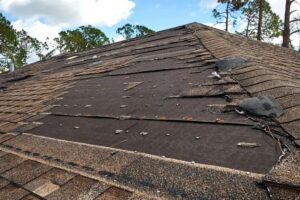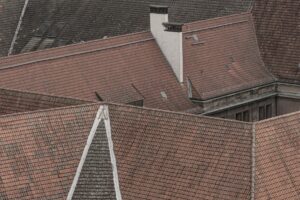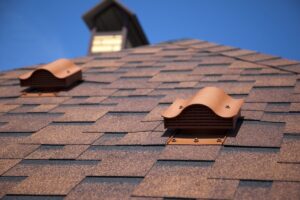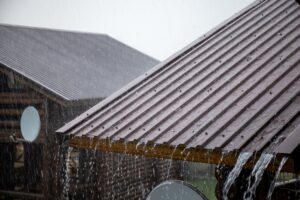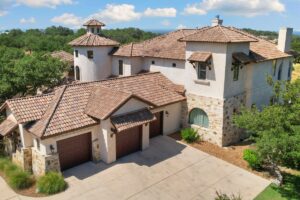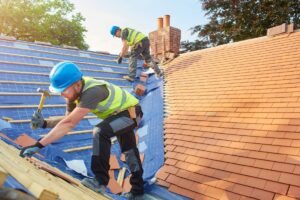Low-E glass, or low emissivity glass, is a type of glass that has a special coating that helps to control heat transfer. It is an important factor to consider when choosing windows and doors for your home or building, as it can have a significant impact on energy efficiency and overall comfort levels. In this article, we will explore everything you need to know about low-E glass, from its benefits to how it works, and much more.
What is Low-E Glass?
Low-E glass is a type of glass that has a thin, transparent coating applied to it. This coating is designed to reflect heat radiation, preventing it from passing through the glass. The term “low emissivity” refers to the ability of the glass to emit heat radiation, which is measured on a scale from 0 to 1. The lower the number, the less heat the glass emits.
Types of Low-E Glass
There are two main types of low-E glass: hard coat and soft coat. Hard coat Low-E glass is created by applying a layer of tin oxide to the surface of the glass while it is still hot from the manufacturing process. This creates a durable coating that is more resistant to damage, but it is not as effective at blocking heat transfer as soft coat low-E glass.
Soft coat Low-E glass is created by applying a layer of silver to the surface of the glass using a process called sputtering. This creates a more effective coating that is better at blocking heat transfer, but it is also more delicate and prone to damage.
How Does Low-E Glass Work?
The primary function of Low-E glass is to help keep the building cool in the summer and warm in the winter. During the summer, Low-E glass helps to reflect the sun’s heat back outside, preventing it from entering the building and making it hot. During the winter, Low-E glass works in reverse, reflecting the heat from inside the building back into the room, thereby keeping it warm. Here’s how Low-E Glass works:
Infrared Radiation
Low-E glass works by controlling the transfer of infrared radiation, which is the type of heat that is transmitted through the glass. Infrared radiation can be divided into two types: short-wave infrared radiation, which is responsible for heating objects in direct sunlight, and long-wave infrared radiation, which is responsible for the warmth you feel when standing near a heated object.
Reflection and Absorption
Low-E glass controls heat transfer by reflecting and absorbing infrared radiation. The thin coating applied to the glass is made up of multiple layers of metallic particles, which reflect the infrared radiation back toward its source. This prevents the heat from passing through the glass and into the building.
The coating also absorbs some of the infrared radiation, which helps to further reduce the amount of heat that passes through the glass. The exact amount of radiation that is absorbed depends on the specific type of low-E glass and the thickness of the coating.
Benefits of Low-E Glass
Low-E glass is an energy-efficient type of glass that can provide significant benefits for both residential and commercial buildings. The technology behind Low-E glass involves a thin layer of metallic particles on the glass’s surface, which helps to reflect the sun’s energy away from the building. Here are the benefits of Low-E glass:
Energy Efficiency
One of the main benefits of low-E glass is its ability to improve energy efficiency. By reducing the amount of heat that passes through the glass, low-E glass helps to keep buildings cooler in the summer and warmer in the winter. This can result in significant energy savings and lower utility bills.
Comfort
Low-E glass also helps to improve comfort levels by reducing the amount of heat that enters the building. This can help to keep rooms at a more consistent temperature, reducing the need for heating and cooling systems to work harder to maintain a comfortable environment. Additionally, low-E glass can reduce the amount of glare that enters a room, making it easier to read, watch television, or work on a computer without being blinded by the sun.
UV Protection
Another benefit of low-E glass is its ability to block harmful ultraviolet (UV) radiation. UV radiation can damage fabrics, carpets, and artwork over time, causing them to fade or discolor. Low-E glass can help to block up to 99% of UV radiation, helping to protect your belongings and extend their lifespan.
Improved Security
Low-E glass can also improve the security of a building. The glass is more difficult to break than standard glass, making it more difficult for intruders to enter the building. Additionally, if the glass is broken, it will not shatter into sharp pieces, reducing the risk of injury.
Applications of Low-E Glass
Low-E glass or Low-emissivity glass is a special type of glass that has a thin, transparent coating that reflects heat back into the room instead of allowing it to pass through the glass. This type of glass is widely used in both residential and commercial buildings due to its energy efficiency, comfort, UV protection, and noise reduction properties.
Residential Buildings
Low-E glass is a popular choice for residential buildings, particularly for windows and doors. By improving energy efficiency and reducing heat transfer, low-E glass can help homeowners save money on utility bills and create a more comfortable living environment. Additionally, low-E glass can help to protect furniture, flooring, and other interior elements from UV damage.
Commercial Buildings
Low-E glass is also widely used in commercial buildings, such as offices, retail stores, and hotels. By improving energy efficiency, low-E glass can help businesses save money on heating and cooling costs, while also providing a more comfortable environment for employees and customers. Additionally, low-E glass can help to improve the overall appearance of a building, making it more attractive to potential customers or tenants.
Overall, low-E glass is an excellent choice for both residential and commercial buildings due to its many benefits. It helps to reduce energy bills, improve comfort, protect against UV rays, and reduce noise pollution. By using low-E glass in their buildings, homeowners and business owners can create a more sustainable, comfortable, and enjoyable indoor environment for everyone.
How to Choose Low-E Glass
Choosing the right Low-E glass for your building can be a challenging task, as there are many factors to consider. Here are some factors to consider when choosing Low-E glass:
Performance Factors
Performance factors to consider include the specific type of low-E glass, the thickness of the coating, and the overall energy efficiency rating of the glass. It is important to choose a type of low-E glass that is appropriate for your climate and the orientation of your windows or doors.
Cost
The cost of low-E glass can vary depending on the specific type and thickness of the coating, as well as the size and style of the window or door. While low-E glass may be more expensive than traditional glass, the energy savings it provides can help to offset the initial cost over time.
Appearance
Low-E glass is available in a range of tints and coatings, which can affect the appearance of the glass. Some coatings may appear slightly blue or green, while others may be almost invisible. It is important to choose a type of low-E glass that complements the style and aesthetics of your building.
Climate
The climate in which the building is located will play a significant role in determining the type of Low-E glass that is best suited for the building. For example, in colder climates, a Low-E glass with a higher Solar Heat Gain Coefficient (SHGC) may be more appropriate to allow more heat from the sun into the building, while in hotter climates, a Low-E glass with a lower SHGC may be more appropriate to reduce solar heat gain.
Building Type
The type of building, whether it’s residential or commercial, will also play a role in determining the type of Low-E glass to use. For example, a commercial building may require a Low-E glass with higher noise reduction properties, while a residential building may require a Low-E glass with better thermal insulation.
Installation and Maintenance of Low-E Glass
The installation and maintenance of Low-E glass are critical to ensuring the glass functions as intended and lasts for a long time. Here is a brief explanation of the installation and maintenance process for Low-E glass:
Installation of Low-E Glass
- Prepare the opening: The opening where the Low-E glass will be installed must be prepared by ensuring it is clean, level, and free from any debris.
- Measure and cut the glass: The Low-E glass is measured and cut to the correct size for the opening. Special care must be taken during this process to ensure the glass is not damaged.
- Install the glass: The Low-E glass is installed into the opening and secured in place using appropriate hardware. The installation process should be done with care to avoid any damage to the glass.
- Inspect the glass: Once the Low-E glass is installed, it should be inspected for any damage or defects. Any issues should be addressed immediately.
Maintenance of Low-E Glass
- Clean regularly: Low-E glass should be cleaned regularly using a mild soap and water solution. Harsh chemicals and abrasives should be avoided as they can damage the glass.
- Check for damage: Low-E glass should be regularly inspected for any damage or defects. Any issues should be addressed immediately.
- Maintain seals: The seals around the Low-E glass should be inspected regularly and maintained as needed. Damaged or deteriorated seals can result in air and water leaks, reducing the energy efficiency of the glass.
- Adjust hardware: The hardware used to secure the Low-E glass should be checked regularly and adjusted as needed to ensure a secure fit.
Overall, proper installation and maintenance of Low-E glass are critical to ensure the glass functions as intended and lasts for a long time. By following these steps, you can help to maximize the energy efficiency, UV protection, and overall performance of your Low-E glass.
Potential Drawbacks of Low-E Glass
While Low-E glass offers many benefits, it also has some potential drawbacks that should be considered before deciding to use it in a building. Despite these potential drawbacks, the benefits of Low-E glass often outweigh the costs, and it remains a popular and effective option for improving the energy efficiency and comfort of buildings. So what are the drawbacks?
The Cost
Low-E glass can be more expensive than traditional glass, which can make it a less appealing option for those on a tight budget. However, the energy savings it provides can help to offset the initial cost over time.
The Durability
Soft-coat low-E glass is more delicate than hard-coat low-E glass and can be more prone to damage, such as scratches and chips. It is important to handle soft coat low-E glass with care during installation and maintenance.
The Maintenance
Low-E glass requires minimal maintenance, but it is important to clean the glass regularly to ensure it remains clear and free from dirt and debris. While low-E glass is durable and scratch-resistant, harsh chemicals and abrasive cleaning tools can damage the coating and reduce its effectiveness.
The Aesthetics
Low-E glass may have a slightly different appearance than traditional glass, particularly if it has a tint or coating. While some people may prefer the look of traditional glass, others find that the improved energy efficiency and other benefits of low-E glass outweigh any aesthetic differences.
Conclusion
Low-E glass is a popular choice for residential and commercial buildings, offering a range of benefits including improved energy efficiency, reduced heat transfer, and UV protection. When choosing low-E glass, it is important to consider factors such as performance, cost, and appearance, as well as the installation and maintenance requirements. While there are some potential drawbacks to using low-E glass, the benefits often outweigh any concerns.


